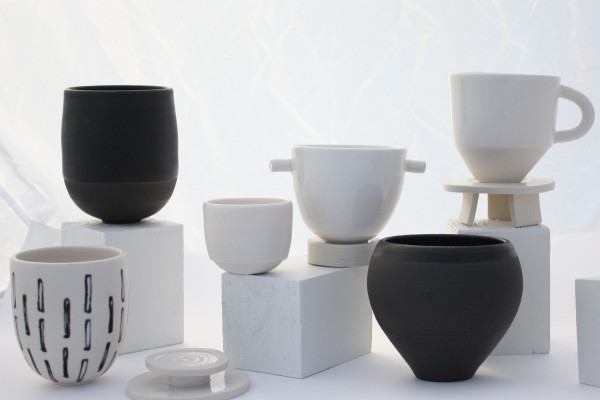Interested in the intersection of art and technology, self-taught artist Chrissy Brimmage hopes her 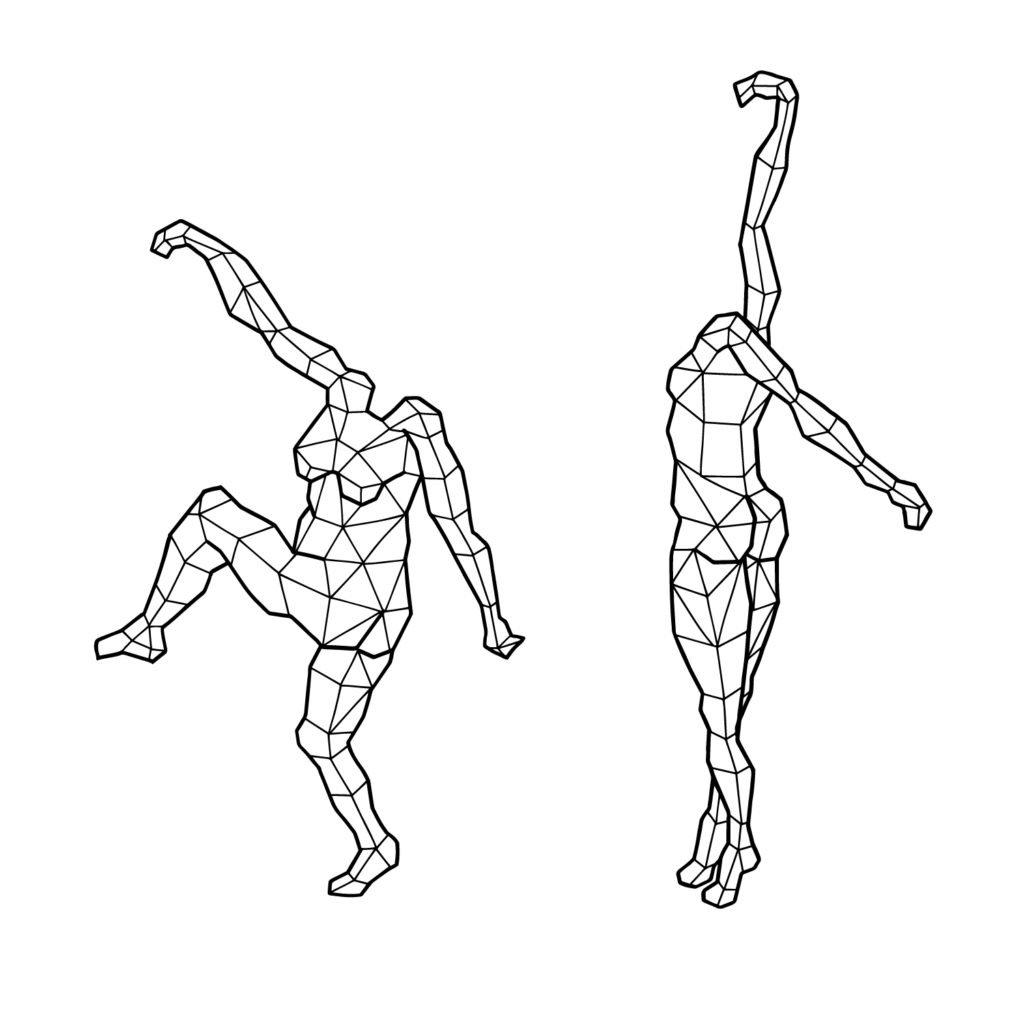 work will enhance and highlight the human experience for audiences in innovative, intimate and interactive ways. Fewer things illustrate that better than her recent human heart sculpture that changed colors like a mood ring when you touched it.
work will enhance and highlight the human experience for audiences in innovative, intimate and interactive ways. Fewer things illustrate that better than her recent human heart sculpture that changed colors like a mood ring when you touched it.
Leveraging her point of view and modern technologies, such as 3-D printing, intelligent materials, and virtual reality, the Atlanta native says her line-art style was inspired by a dream she had following a self-exploration trip to Thailand. “What I learned there allowed me to embrace the new style and let go of old ways of thinking that were holding me back.”
The dream she described consisted of a world of wireframe figures, prompting her to title her style “wireframing.” Her heart sculpture was featured at The Gallery | wish during its Her Ritual exhibition, and it created “next level” chatter throughout the show. The piece was titled “Paper Heart” — a 3-D printed nylon heart covered in special crystals that allowed it to react to its environment and human touch.
Here, CommonCreativ chats with Chrissy about what she’s got in the works, growing up alongside the internet, and what she wants her art to convey.
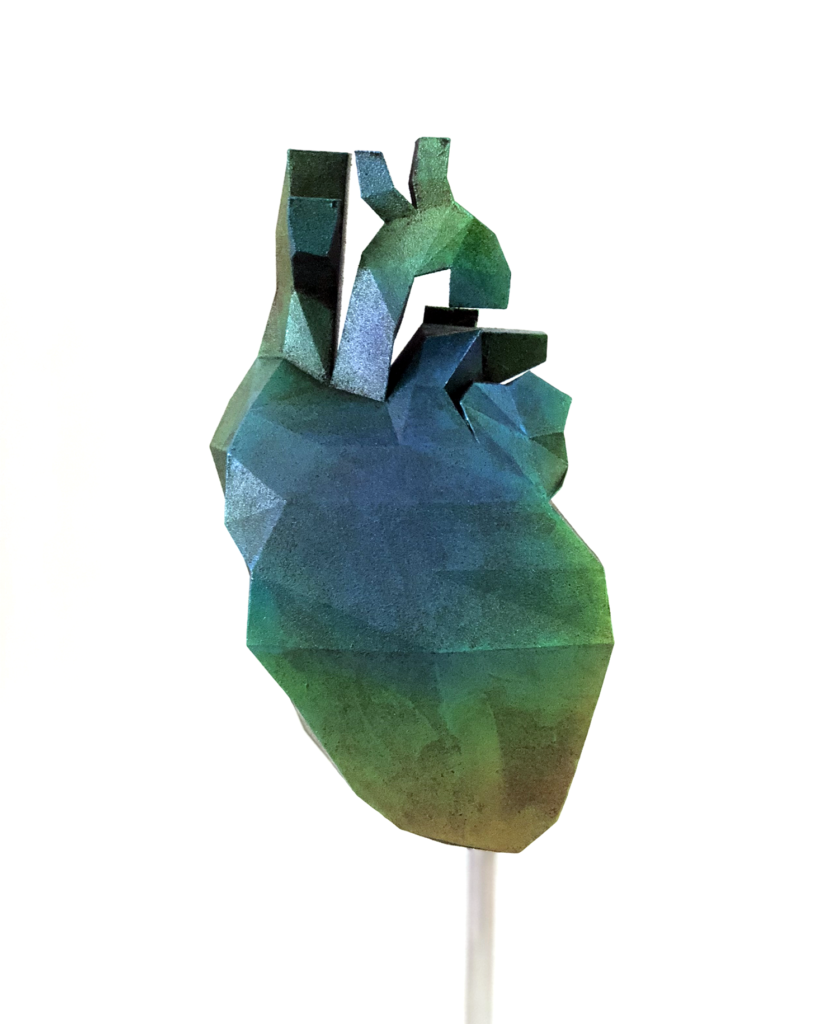
Photo by Angie Luvara
CommonCreativ: What’s your creative process? How do you get started?
Chrissy Brimmage: I’m not sure if there’s one set process that I follow because everything around me has the potential to inspire me. I’m not really married to one medium anymore. The one commonality between it all, though, is that everything feels meditative. So, it begins with the meditation on one thought, feeling, or idea, and then those meditations manifest [themselves] into the process, medium, or form that it needs to be.
CC: How would you describe wireframing?
CB: This is a great question, and one that I’ve never been asked before so I’m not sure if I’ve ever put words to it. The word “wireframe” comes from the process engineers and 3-D modelers use to create a skeleton of a prototype, using only lines and vertices. This form is what I saw in the dream that inspired my style, which is why I ran with “wireframing.” However, if I had to put a definition behind it, I would say wireframing is concentrating on the inner workings and forms of a figure or idea in order to express the larger framework that figure exists or functions in or as. When you look at one of my wireframe figures, they’re usually genderless and faceless because they’re more so think-heads, helping to explore or make sense of a larger idea.
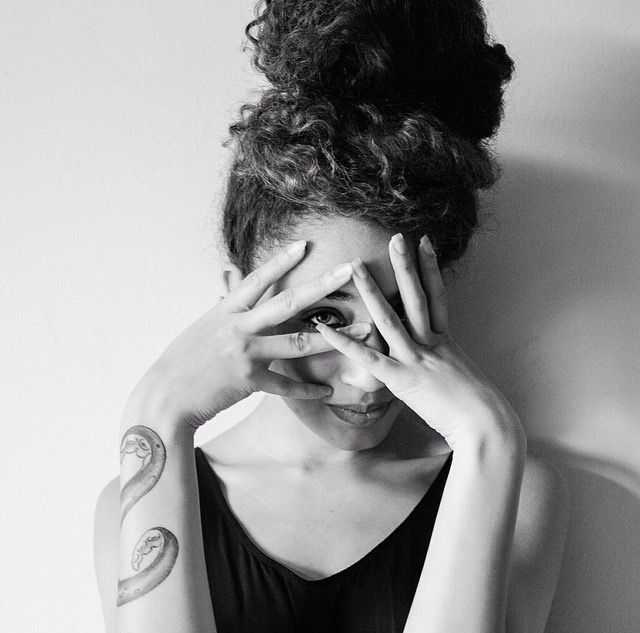
Photo by Joseph Kelly
CC: Do you think your style would be different if you hadn’t been so inspired by Thailand?
CB: There wasn’t anything directly that I saw in Thailand that inspired the style. It was more so the experience that served as a catalyst. What I learned there allowed me to embrace the new style and let go of old ways of thinking that were holding me back. I would love to think that I would have eventually been able to reach that place on my own, but honestly who knows.
CC: How did you become interested in the intersection of art and tech?
CB: Growing up, I was interested in science and tech. This was way before I was fully interested in art. Originally, I wanted to be a biomedical geneticist and work in a lab full-time studying genetic diseases. That dream faded when I realized I would have to go to school for 12 or more years, but the love for science always remained. I just didn’t really know how to explore it outside of that academic lens. Same for tech. My dad was a programmer and he raised me on video games. Also, I’m one of those lucky kids that got to see the transition of a world pre- and post-internet, and watch the progression of things like personal computers, mobile phones, and 3-D printers. It’s all kind of grown up with me. So, I think being born into an era where modern tech really took off has always left me intrigued.
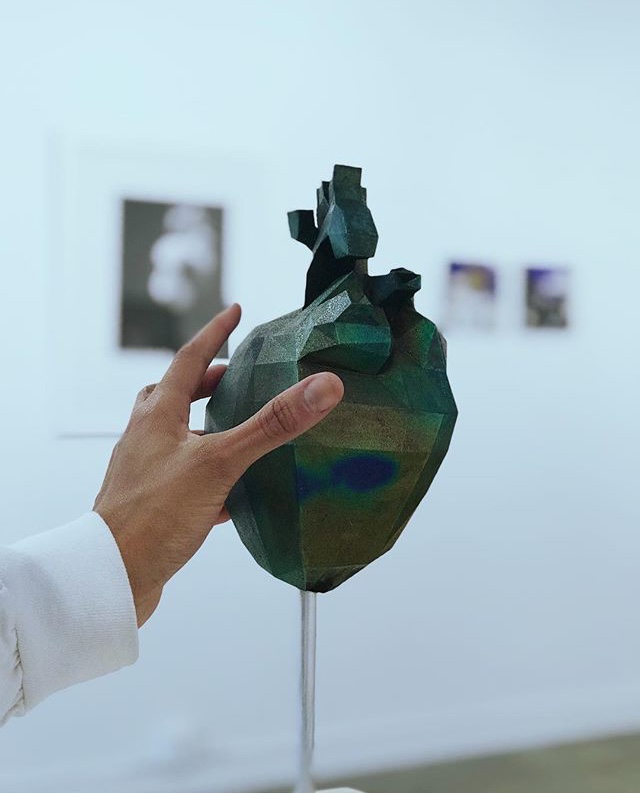
Photo by jimniiart
I’ve always wanted to be involved [with and use] tech, but again, I was never really trying to go to school for programming or computer science or anything in that realm. It wasn’t until recently that my art and I matured enough to realize that science, tech, and art all go hand and hand, and that I can bring the three together in my own way to communicate my artistic vision in innovative and intimate ways, as well as beyond some barriers I couldn’t quite get past with traditional mediums.
CC: What inspires you?
CB: Everything. Current events, other artists, pigeons, my friends, nature, dreams, emotions, my city, octopuses, poetry, music, travel, love, the human experience, anime and cartoons, social problems. It may be easier to list things that don’t inspire me, which I’m not even sure if I could do.
CC: What do you want your work to convey?
CB: Every piece has its own message and purpose, but I think the general thing I want to convey with my work is honesty and vulnerability. As long as I and others can feel honesty in my work, I’m happy.
CC: How do you promote yourself?
CB: Mostly through social media, but specifically on Twitter and Instagram. I’m kind of terrible at it because I have a bad tendency to post consistently for a period of time and then disappear for an undefined period, but I mostly post all of my work and anything I have going on there.
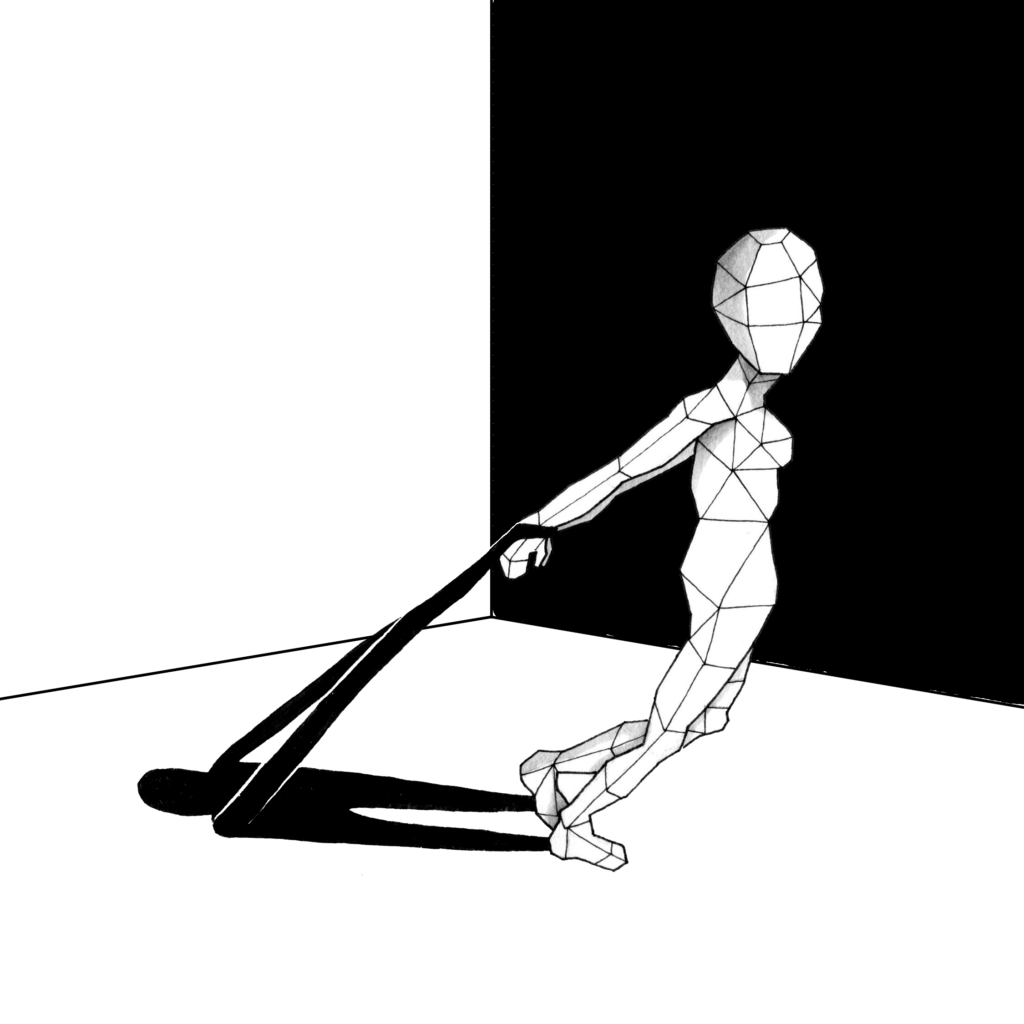 CC: What projects have you been working on?
CC: What projects have you been working on?
CB: Last month at MINT Gallery I was in a group show that I created my first ever programmed piece for. Born out of meditation on the impact of gentrification on Black communities as well as inspiration from the classic Atari Space Invaders game, I created a clone of the game where players are able to battle against aspects of gentrification to save their ‘hood. The difficulty of the game as well as the sprite representations were intentionally set in hopes of evoking the angst felt by Black communities when faced with encroaching gentrification in their neighborhoods. I’m pretty excited about that. I also just found out that I’ll be doing my first ever public art installation this month for Atlanta Streets Alive.
CC: What would be your dream collaboration?
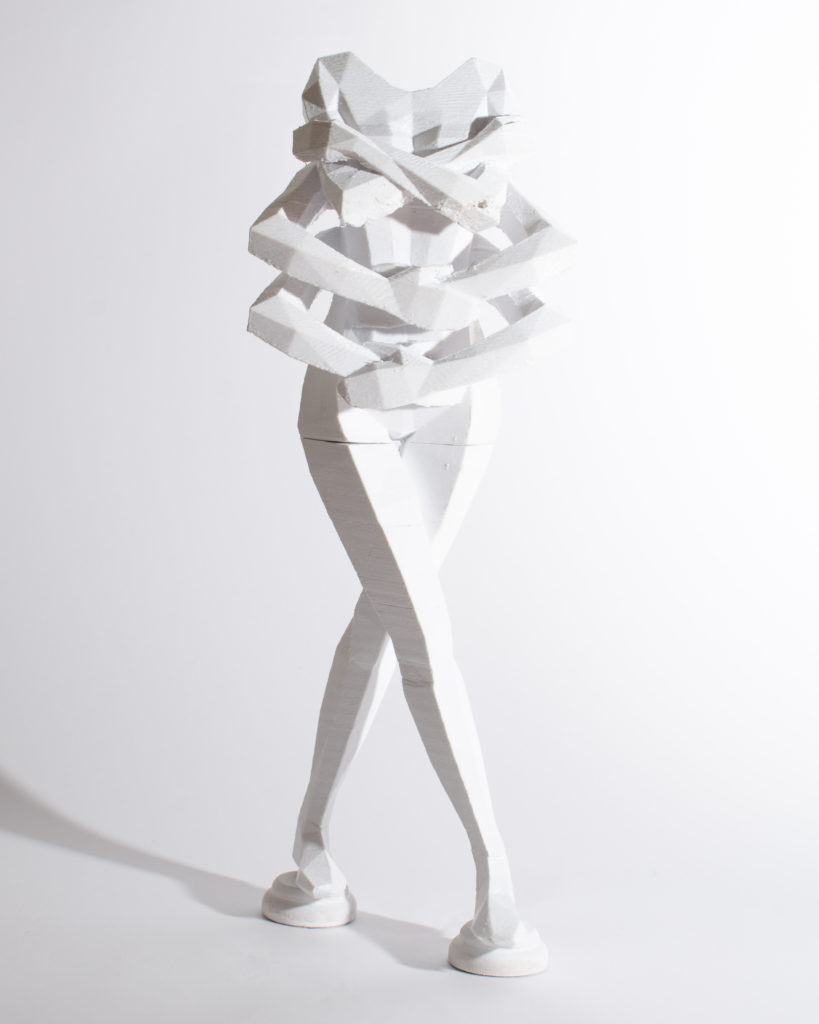
Photo by Angie Luvara
CB: Definitely making a piece of some sort with Moonassi. I absolutely adore him and his work. He played a huge role in helping me define my artistic voice. Also, I recently came across an immersive experience designer named Dejha Ti that I’m kind of obsessed with. She’s such an inspiration, so it would be awesome if I got to collaborate with her as well.
CC: What are your thoughts on arts scene in Atlanta?
CB: I have a lot of thoughts, but I think what I’ll say is that we have a great scene here. There are a lot of really talented and unique artists with infinite potential that should be nurtured and protected at all costs. But there’s a disconnect between the art culture here and the art institutions, as well as a good bit of gatekeeping. I think if Atlanta could learn to marry the two, and embrace and nurture all the talent here before they get big and leave, we could really have something special.
See more of Chrissy’s art on her portfolio site, Twitter, and Instagram.





